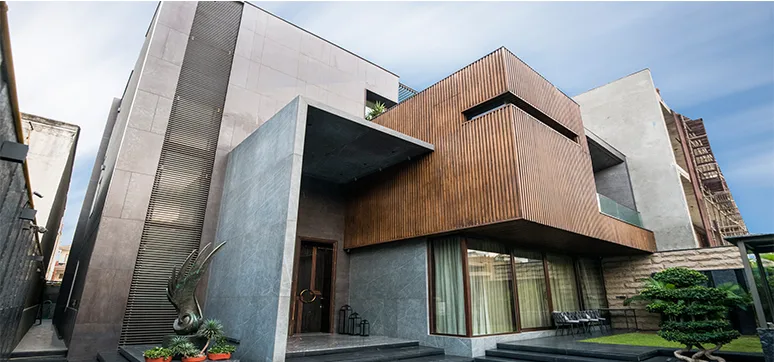Efficient façade design stands as a crucial component in contemporary architectural methodologies, extending beyond superficial aesthetic considerations. Its impact goes far beyond mere visual appeal, exerting substantial influence over a building’s holistic energy performance. This integral facet of architectural ingenuity plays a central role in mitigating energy consumption, bolstering sustainability efforts, and delineating the environmental footprint of structures.
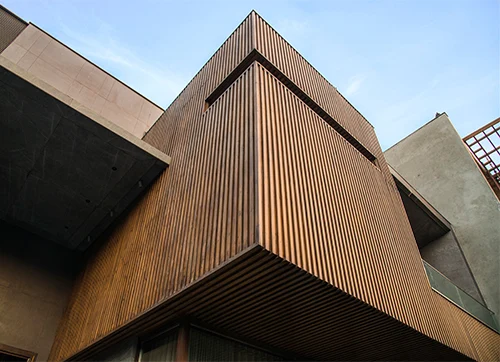
In the context of this discourse, Architect Gagandeep Kapila, director of Workshop for Metropolitan Architecture, critically examines the profound implications of façade design on building energy performance. This exploration aims to shed light on the multifaceted advantages it offers, emphasising its indispensable role in advancing sustainable construction paradigms. By delving into the intricacies of façade design, this scrutiny not only highlights its functional and practical significance but also underscores its pivotal contribution to the overarching goal of creating environmentally conscious and energy-efficient structures.
Designing a façade efficiently involves purposeful integration of architectural elements, strategically crafted to elevate a building’s energy efficiency and adhere to environmental principles. The façade comprises essential components, including windows, insulation, shading devices, and ventilation systems, collectively assuming a significant role as the foremost defence against external influences. This ascribes paramount importance to the façade in the meticulous regulation of internal climate conditions within the building. By addressing these elements, efficient façade design contributes crucially to the overall performance and sustainability of the structure.
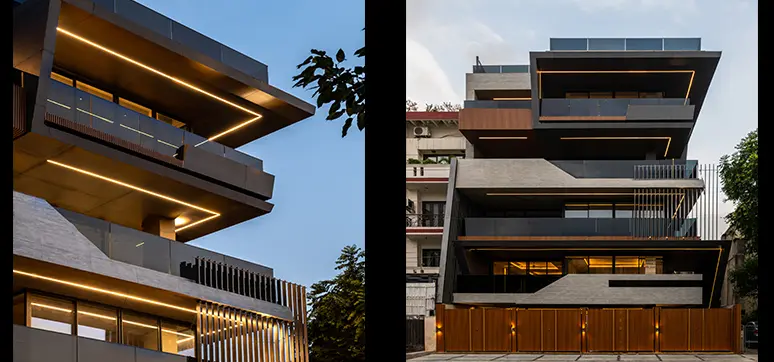
In the context of this discourse, Architect Gagandeep Kapila, director of Workshop for Metropolitan Architecture, critically examines the profound implications of façade design on building energy performance. This exploration aims to shed light on the multifaceted advantages it offers, emphasising its indispensable role in advancing sustainable construction paradigms. By delving into the intricacies of façade design, this scrutiny not only highlights its functional and practical significance but also underscores its pivotal contribution to the overarching goal of creating environmentally conscious and energy-efficient structures.
THERMAL PERFORMANCE & ENERGY CONSERVATION
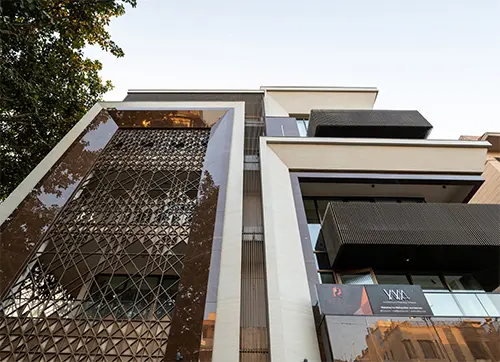
A well-crafted façade serves as an exceptionally proficient thermal barrier, adeptly regulating the heat transfer between a building’s interior and exterior environments. The strategic incorporation of advanced insulation materials and cutting-edge glazing technologies is pivotal in mitigating heat loss during colder seasons while tempering heat accumulation in warmer climates. This strategic approach substantially diminishes the reliance on heating, ventilation, and air conditioning (HVAC) systems. Consequently, structures equipped with efficient façades realise noteworthy energy savings, resulting in a substantial decrease in operational costs and a diminished carbon footprint.
The intricate interplay of these design elements accentuates the crucial role of an efficient façade in advancing energy efficiency and promoting environmental sustainability. Beyond its aesthetic appeal, the façade emerges as a linchpin in the pursuit of eco-friendly practices, showcasing its capacity to enhance energy performance, minimise environmental impact, and contribute significantly to the overarching objectives of sustainable construction.
NATURAL LIGHT OPTIMISATION
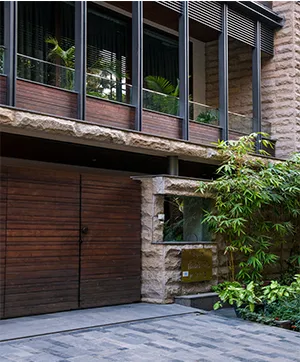
Attaining a subtle balance between the infiltration of natural light and the absorption of solar heat, a skillfully designed façade aims to enhance daylight utilisation while concurrently addressing challenges like glare and excess heat. The incorporation of daylight-responsive lighting systems further reduces the reliance on artificial illumination during daylight hours, thereby effectively decreasing overall energy consumption. This flawless fusion of natural and artificial lighting not only enhances the comfort and well-being of occupants within the built environment but also represents a conscientious effort towards achieving a harmonious atmosphere.
The impeccable coordination of these design elements serves to emphasise not only the significance of adept façade design in optimising energy efficiency but also its paramount role in elevating the overall experience and satisfaction of individuals inhabiting the space. This thoughtful incorporation of lighting dynamics not only aligns with sustainability objectives but also highlights a dedicated commitment to creating environments that prioritise both energy efficiency and occupant comfort. In essence, it underscores the crucial role of façade design in fostering spaces that are not only energy-efficient but also conducive to the well-being and contentment of those within.
VENTILATION & INDOOR AIR QUALITY
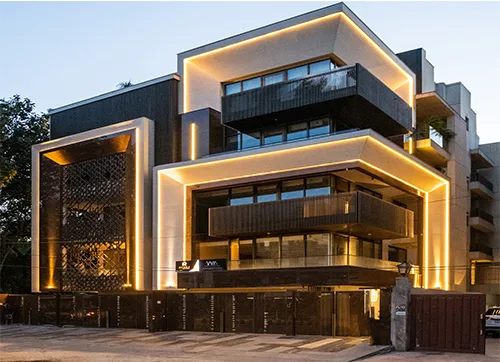
The incorporation of passive ventilation strategies into façade design epitomises a judicious method for enhancing indoor air quality. Extending beyond the reduction of reliance on mechanical ventilation, adequately ventilated spaces play a vital role in elevating occupant comfort levels and fostering heightened productivity. Moreover, the intentional incorporation of green façades and living walls introduces inherent air-purifying elements, thereby cultivating a healthier and more conducive built environment. This deliberate attention to passive ventilation techniques and the inclusion of green elements conveys a commitment to crafting spaces that place a premium on both occupant well-being and environmental sustainability. The intentional implementation of these strategies not only reflects a conscious approach to indoor air quality but also signifies a dedication to creating spaces that promote the holistic health and satisfaction of individuals within the built environment while aligning with principles of sustainable design.
INTEGRATION OF RENEWABLE ENERGY TECHNOLOGIES
Strategically designed and efficient façades provide an optimal framework for the effortless employment of renewable energy technologies. Photovoltaic panels, solar thermal systems, and various sustainable energy solutions seamlessly blend with façade elements, initiating a transformative process wherein buildings transition into dynamic, energy-generating entities. This harmonious relationship between architectural design and renewable energy sources extends beyond energy generation, serving as a catalyst for a substantial shift towards achieving zero-net-energy and carbon-neutral structures.
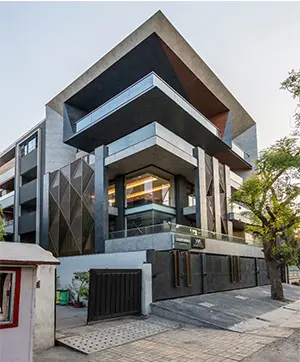 The symbiotic fusion of architecture and renewable energy stands as a testament to a resolute commitment to sustainable practices and the advancement of environmentally conscious built environments. This intentional utilisation of renewable energy technologies within the façade not only contributes to the immediate generation of energy but also underscores a broader commitment to mitigating environmental impact.
The symbiotic fusion of architecture and renewable energy stands as a testament to a resolute commitment to sustainable practices and the advancement of environmentally conscious built environments. This intentional utilisation of renewable energy technologies within the façade not only contributes to the immediate generation of energy but also underscores a broader commitment to mitigating environmental impact.
It exemplifies a forward-thinking approach to fostering buildings that actively contribute to the reduction of carbon emissions, aligning with the overarching objectives of sustainable development and environmental stewardship. The incorporation of these technologies into architectural design represents a pivotal step towards realising structures that not only meet the functional needs of occupants but also actively contribute to a more sustainable and ecologically responsible built environment.
URBAN HEAT ISLAND MITIGATION
In urban landscapes, the efficacy of façade design emerges as a central factor in mitigating the urban heat island effect. Through strategic measures such as sunlight reflection and reduced heat absorption, meticulously crafted façades actively contribute to regulating local temperatures. This proactive strategy effectively reduces the overall energy demand for cooling, reinforcing the resilience of cities against the impacts of climate change.
Concurrently, the influence of efficient façade design on building energy performance transcends its visual appeal. A thoughtfully designed façade becomes a tangible manifestation of sustainable architectural principles, propelling the realisation of energy-efficient, resilient, and environmentally conscious urban environments. As the momentum for sustainable construction practices intensifies, architects and designers are compelled to consistently prioritise and refine efficient façade design. This dedication heralds an era characterised by structures that not only cater to the needs of occupants but also align with broader planetary considerations, marking a substantial stride towards a sustainable and harmonious coexistence with the environment. The integration of these principles underscores the profound impact that thoughtful façade design can have, not only on individual buildings but on the broader urban fabric and its ability to address contemporary environmental challenges.
